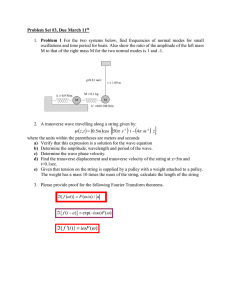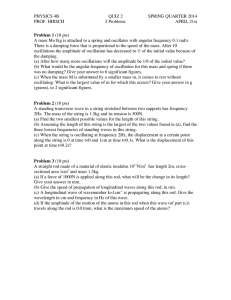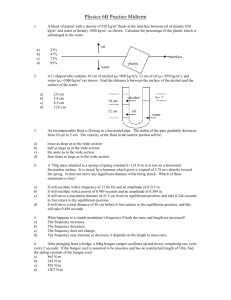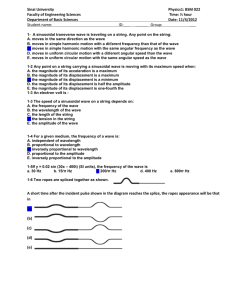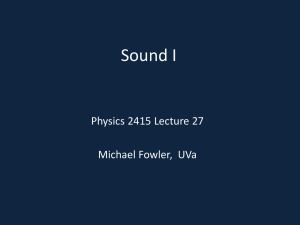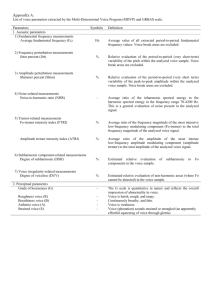Waves on a String Exercise
advertisement
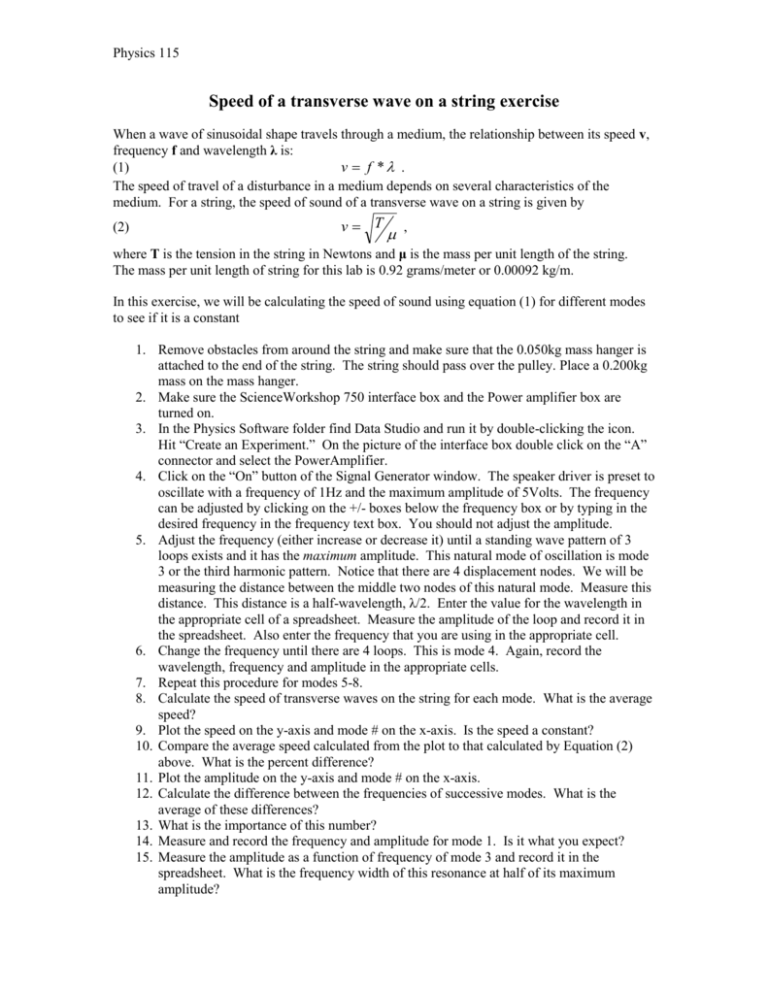
Physics 115 Speed of a transverse wave on a string exercise When a wave of sinusoidal shape travels through a medium, the relationship between its speed v, frequency f and wavelength λ is: v f * . (1) The speed of travel of a disturbance in a medium depends on several characteristics of the medium. For a string, the speed of sound of a transverse wave on a string is given by (2) v T , where T is the tension in the string in Newtons and μ is the mass per unit length of the string. The mass per unit length of string for this lab is 0.92 grams/meter or 0.00092 kg/m. In this exercise, we will be calculating the speed of sound using equation (1) for different modes to see if it is a constant 1. Remove obstacles from around the string and make sure that the 0.050kg mass hanger is attached to the end of the string. The string should pass over the pulley. Place a 0.200kg mass on the mass hanger. 2. Make sure the ScienceWorkshop 750 interface box and the Power amplifier box are turned on. 3. In the Physics Software folder find Data Studio and run it by double-clicking the icon. Hit “Create an Experiment.” On the picture of the interface box double click on the “A” connector and select the PowerAmplifier. 4. Click on the “On” button of the Signal Generator window. The speaker driver is preset to oscillate with a frequency of 1Hz and the maximum amplitude of 5Volts. The frequency can be adjusted by clicking on the +/- boxes below the frequency box or by typing in the desired frequency in the frequency text box. You should not adjust the amplitude. 5. Adjust the frequency (either increase or decrease it) until a standing wave pattern of 3 loops exists and it has the maximum amplitude. This natural mode of oscillation is mode 3 or the third harmonic pattern. Notice that there are 4 displacement nodes. We will be measuring the distance between the middle two nodes of this natural mode. Measure this distance. This distance is a half-wavelength, λ/2. Enter the value for the wavelength in the appropriate cell of a spreadsheet. Measure the amplitude of the loop and record it in the spreadsheet. Also enter the frequency that you are using in the appropriate cell. 6. Change the frequency until there are 4 loops. This is mode 4. Again, record the wavelength, frequency and amplitude in the appropriate cells. 7. Repeat this procedure for modes 5-8. 8. Calculate the speed of transverse waves on the string for each mode. What is the average speed? 9. Plot the speed on the y-axis and mode # on the x-axis. Is the speed a constant? 10. Compare the average speed calculated from the plot to that calculated by Equation (2) above. What is the percent difference? 11. Plot the amplitude on the y-axis and mode # on the x-axis. 12. Calculate the difference between the frequencies of successive modes. What is the average of these differences? 13. What is the importance of this number? 14. Measure and record the frequency and amplitude for mode 1. Is it what you expect? 15. Measure the amplitude as a function of frequency of mode 3 and record it in the spreadsheet. What is the frequency width of this resonance at half of its maximum amplitude?
